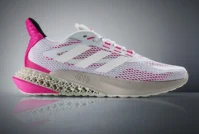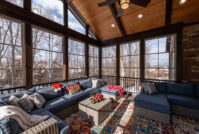look what we did!
Category: Architecture
Polyurethane Shapes City Skyline, Helps Skyscrapers Reach New Heights
15 Park Row in New York City was once the world’s tallest building at just 391 feet in 1899. Today, the Burj Khalifa in Dubai achieves that distinction, rising an astonishing 2,771 feet.
Just how have skyscrapers soared to such great heights over the past 120 years? The answer lies in innovation. Advancements in technology like the advent of modern materials are solving the inevitable difficulties that arise in construction. Among the most significant innovations is polyurethane, which plays a number of essential roles in the building process.
Here are just a few of the ways polyurethane is shaping city skylines around the world:
Carrying the Load
In construction, thousands of tons of steel and glass must rise hundreds of feet into the air. To keep all that weight upright and supported, engineers often look at secondary ways of helping the structure evenly distribute the weight. This is where building materials like polyurethane come into play. Polyurethane is excellent for creating load-bearing panels or decorative columns that provide support.
Providing Climate Control
Air infiltration, which is the unintentional or accidental introduction of outside air into a building, is estimated to be responsible for more than 40 percent of a structure’s energy loss. Because skyscrapers must accommodate so many tenants’ temperature preferences, proper insulation of each section is critical. Polyurethane has long been used as insulation in homes and commercial buildings, and the application of spray polyurethane foam (SPF) is well suited to meet the needs of skyscrapers as its spray application forms an insulating and air sealing barrier on walls, roofs, around corners and contoured surfaces.
Making Components Stick Together
As architects and builders continue pushing the envelope of design, they are turning to new composites to bring their plans to life. Polyurethane adhesives contribute to strong bonding solutions, helping to keep these critical composites sticking together. Polyurethane adheres to a wide variety of materials.
Helping to Beautify
Beyond its utilitarian function, polyurethane is also prized for its aesthetic application. Nowadays, architects and designers are turning to polyurethane for interior design. The material is incredibly versatile. It can be made to mimic the look of wood and metal, and it can also be used to form everything from cornices to corbels and from ceiling domes to chair rails. Best of all, the abundance of polyurethane-made components makes the challenge of scaling a design to meet the needs of a skyscraper a snap.
Building Towards the Future
As the architects and builders dream up ever bolder and larger structures, polyurethane is up to the task. Companies are hard at work finding creative ways to meet the needs of the giant buildings of tomorrow, pushing the boundaries of innovation ever skyward.

























